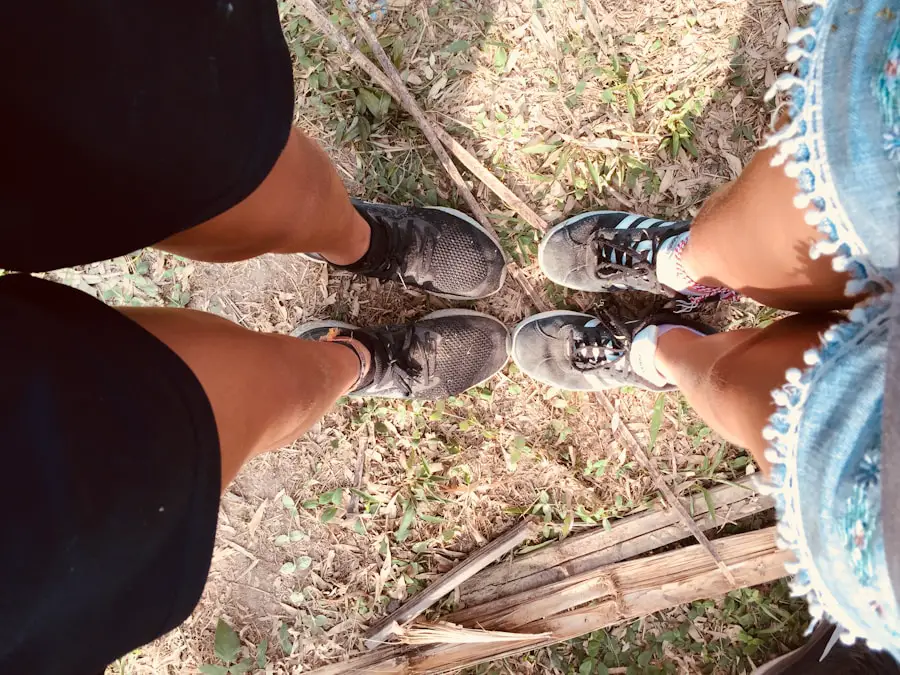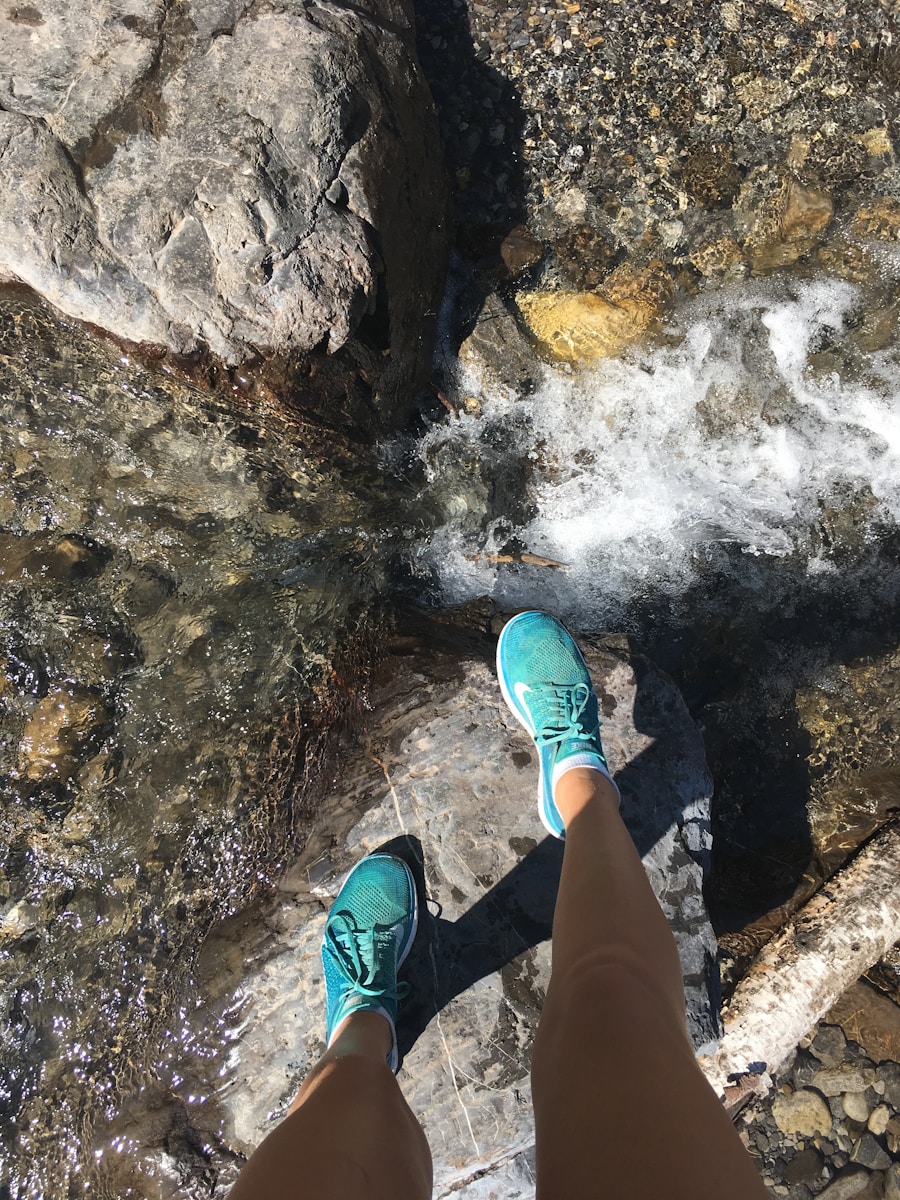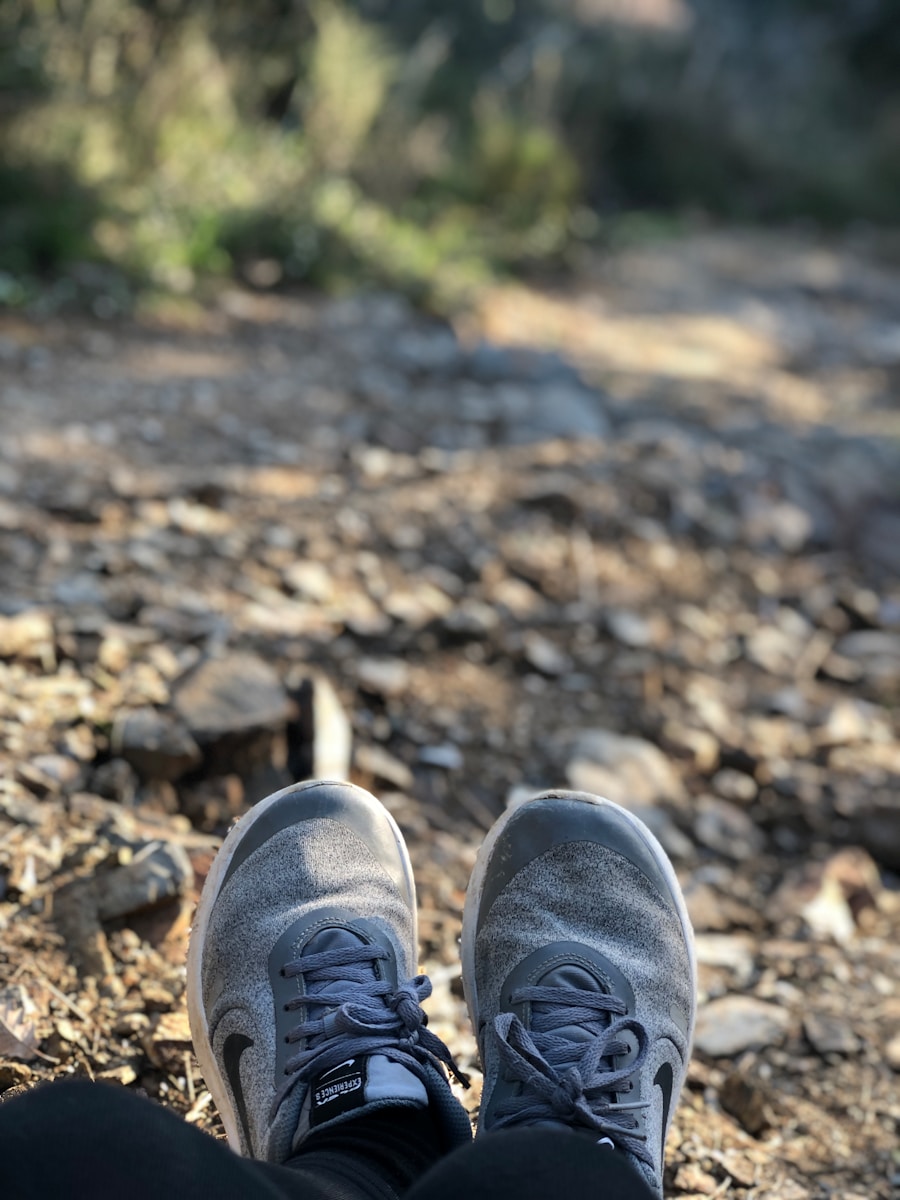Hiking shoes and running shoes are designed with distinct purposes in mind, reflecting the unique demands of each activity. Hiking shoes are typically built to provide stability and support on uneven terrain, featuring a rugged outsole for traction on rocks, mud, and other challenging surfaces. They often incorporate a stiffer midsole to protect the foot from sharp objects and provide a solid base for navigating inclines and declines.
The upper part of hiking shoes is usually made from durable materials that can withstand abrasions and environmental elements, such as water and dirt. This construction is essential for hikers who may encounter various weather conditions and rugged landscapes. In contrast, running shoes prioritize lightweight construction and cushioning to enhance speed and comfort during forward motion.
They are designed to promote a natural running gait, with a flexible sole that allows for quick transitions and a responsive feel. The cushioning in running shoes is often more pronounced in the heel and forefoot areas to absorb impact during repetitive strides on hard surfaces like pavement or tracks. Additionally, running shoes typically feature breathable mesh uppers to keep the feet cool and dry during intense workouts.
The differences in design reflect the specific needs of each activity, making it crucial for enthusiasts to choose the appropriate footwear based on their intended use.
Key Takeaways
- Hiking shoes are designed for stability and support on uneven terrain, while running shoes are designed for flexibility and cushioning on smooth surfaces.
- Considerations for using hiking shoes for running include the type of terrain, distance, and personal comfort preferences.
- Benefits of using hiking shoes for running include durability, traction, and ankle support for trail running.
- Drawbacks of using hiking shoes for running include added weight, reduced flexibility, and potential discomfort on long runs.
- Tips for choosing hiking shoes for running include selecting lightweight and flexible options with adequate cushioning and traction for the intended terrain.
Considerations for Using Hiking Shoes for Running
When contemplating the use of hiking shoes for running, several factors must be taken into account. One of the primary considerations is the terrain on which one plans to run. Hiking shoes excel on rugged trails, providing excellent grip and stability on uneven surfaces.
However, if the running route includes paved roads or smooth paths, the added weight and stiffness of hiking shoes may hinder performance. Runners accustomed to the lightweight feel of running shoes might find hiking shoes cumbersome, potentially affecting their speed and overall enjoyment of the run. Another important aspect to consider is the fit and comfort of hiking shoes during prolonged use.
While hiking shoes are designed for long-distance walking, they may not offer the same level of flexibility and responsiveness as running shoes. Runners often require a shoe that allows for a natural range of motion in the foot, particularly during toe-off phases. If hiking shoes are too rigid or do not provide adequate cushioning, they could lead to discomfort or even injury over time.
Therefore, it is essential to assess how well hiking shoes accommodate individual foot shape and running style before making a decision.
Benefits of Using Hiking Shoes for Running

There are several advantages to using hiking shoes for running, particularly for those who frequently traverse mixed terrain. One significant benefit is the enhanced traction provided by the aggressive tread patterns found on hiking shoes. This feature can be particularly advantageous when running on trails that include loose gravel, mud, or wet surfaces where slipping could be a concern.
The superior grip can instill confidence in runners as they navigate challenging conditions, allowing them to focus on their performance rather than worrying about footing. Additionally, hiking shoes often offer greater durability compared to traditional running shoes. The materials used in their construction are designed to withstand harsh environments, which can be beneficial for runners who frequently encounter rocky trails or abrasive surfaces.
This durability can translate into a longer lifespan for the footwear, making hiking shoes a cost-effective option for those who engage in both activities. Furthermore, the added support and stability provided by hiking shoes can help prevent ankle injuries during trail runs, particularly for individuals who may be prone to rolling their ankles on uneven ground.
Drawbacks of Using Hiking Shoes for Running
| Drawback | Description |
|---|---|
| Lack of Cushioning | Hiking shoes are designed for stability and support on uneven terrain, but they may lack the cushioning needed for running on hard surfaces. |
| Heavier Weight | Hiking shoes are typically heavier than running shoes, which can lead to increased fatigue and slower running times. |
| Less Flexibility | Hiking shoes often have stiffer soles and less flexibility compared to running shoes, which can affect the natural movement of the foot while running. |
| Reduced Breathability | Hiking shoes may have less breathability than running shoes, leading to increased heat and moisture buildup during running. |
| Increased Risk of Injury | Using hiking shoes for running may increase the risk of injuries such as shin splints, plantar fasciitis, and stress fractures due to the mismatch in design and support. |
Despite their benefits, there are notable drawbacks to using hiking shoes for running that should not be overlooked. One of the most significant issues is weight; hiking shoes tend to be heavier than running shoes due to their robust construction. This added weight can lead to fatigue over longer distances, particularly for runners who are accustomed to the lighter feel of specialized running footwear.
The extra bulk may also hinder speed and agility, making it challenging to maintain a quick pace during runs. Another drawback is the stiffness of hiking shoes, which can restrict natural foot movement. Runners rely on a shoe that allows for flexibility in the forefoot area to facilitate an efficient stride.
Hiking shoes, with their stiffer midsoles designed for stability on uneven terrain, may not provide the necessary responsiveness required for effective running mechanics. This lack of flexibility can lead to discomfort or even injuries such as plantar fasciitis or Achilles tendonitis if used over extended periods without proper adaptation.
Tips for Choosing Hiking Shoes for Running
When selecting hiking shoes for running purposes, several key factors should be considered to ensure optimal performance and comfort. First and foremost, it is essential to focus on fit. A well-fitting shoe should allow for some wiggle room in the toes while providing a snug fit around the heel to prevent slippage.
Trying on different brands and models is crucial since sizing can vary significantly between manufacturers. It is advisable to try on shoes later in the day when feet are slightly swollen from daily activities to get an accurate sense of fit. Another important consideration is the level of cushioning provided by the hiking shoe.
While hikers may prioritize durability and support, runners often require adequate cushioning to absorb impact during repetitive strides. Look for models that offer a balance between cushioning and stability without compromising flexibility. Additionally, consider the type of terrain you will be running on; if you plan to tackle rocky trails or muddy paths, opt for shoes with aggressive tread patterns that provide excellent grip.
Alternatives to Using Hiking Shoes for Running

For those who find that hiking shoes do not meet their needs as running footwear, several alternatives exist that cater specifically to trail running enthusiasts. Trail running shoes are designed with features that bridge the gap between traditional running shoes and hiking footwear. They typically offer lightweight construction while incorporating rugged outsoles for traction on various surfaces.
Many trail running models also include additional cushioning compared to standard hiking shoes, allowing for a more comfortable experience during longer runs. Another option is hybrid footwear that combines elements from both hiking and running shoes. These versatile designs often feature a lightweight build with enhanced grip and support suitable for both activities.
Brands have begun developing models specifically aimed at individuals who enjoy both trail running and hiking, providing a solution that does not compromise performance in either domain. Exploring these alternatives can help runners find footwear that meets their specific needs without sacrificing comfort or safety.
How to Transition from Hiking Shoes to Running Shoes
Transitioning from hiking shoes to running shoes requires a thoughtful approach to ensure a smooth adjustment period while minimizing the risk of injury. Start by gradually incorporating running sessions into your routine while still using your hiking shoes. This allows your feet and body to adapt to the different mechanics involved in running without overwhelming them with sudden changes in footwear.
As you become more comfortable with running in your hiking shoes, begin exploring dedicated running footwear options that suit your needs better. Pay attention to how your feet respond during runs; if you experience discomfort or pain, it may be time to invest in a pair of proper running shoes designed specifically for your foot type and gait pattern. Additionally, consider consulting with a professional at a specialty running store who can analyze your stride and recommend suitable options based on your individual biomechanics.
Final Thoughts: Can Hiking Shoes Double as Running Shoes?
The question of whether hiking shoes can effectively double as running shoes does not have a straightforward answer; it largely depends on individual preferences and specific circumstances. For those who primarily run on rugged trails where traction and durability are paramount, hiking shoes may serve as a viable option, especially if they are comfortable and fit well. However, runners who prioritize speed, agility, and responsiveness may find that specialized running footwear better meets their needs.
Ultimately, understanding the differences between these types of footwear is crucial in making an informed decision. While there are benefits to using hiking shoes for running in certain situations, it is essential to weigh these against potential drawbacks such as weight and stiffness. By considering personal preferences, terrain types, and individual foot mechanics, runners can determine whether hiking shoes are suitable for their specific needs or if investing in dedicated running footwear would be more beneficial in the long run.
If you’re considering using hiking shoes for running, you may want to check out this article on how to choose the best travel guidebook for your next trip. Just like selecting the right shoes for a specific activity is crucial, choosing the right guidebook can greatly enhance your travel experience.
FAQs
Can hiking shoes be used for running?
No, hiking shoes are designed for stability and support on uneven terrain, while running shoes are designed for flexibility and cushioning on flat surfaces.
What are the differences between hiking shoes and running shoes?
Hiking shoes typically have a stiffer sole and more ankle support, while running shoes have more cushioning and flexibility to absorb impact and provide a smooth stride.
Can I use hiking shoes for trail running?
While it is possible to use hiking shoes for trail running, it is not recommended as they may not provide the necessary flexibility and cushioning for the repetitive impact of running.
What are the potential risks of using hiking shoes for running?
Using hiking shoes for running can increase the risk of discomfort, blisters, and injury due to the lack of cushioning and flexibility designed for running.
Can I use running shoes for hiking?
Running shoes are not ideal for hiking as they lack the ankle support and stability needed for navigating uneven terrain. It is recommended to use hiking shoes for hiking and running shoes for running.
